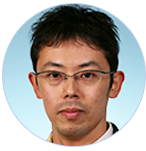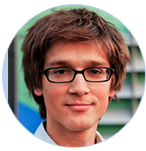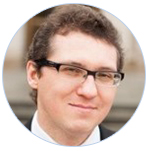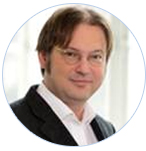Speakers
-
-

- Yong-Yeol Ahn
- Indiana University Bloomington, USA
- Hierarchical Modular Structure of Global Labor Flow Network
Biography & Abstract
-
-
Biography
Yong-Yeol (YY) Ahn is an assistant professor at Indiana University School of Informatics and Computing and a co-founder of Janys Analytics. He develops and leverages mathematical and computational methods to study complex systems such as cells, the brain, society, and culture. His recent contribution includes a new framework to identify pervasively overlapping modules in networks, network-based algorithms to predict viral memes, and a new computational approach to study food culture. He is a recipient of several awards including Microsoft Research Faculty Fellowship. He worked as a postdoctoral research associate at the Center for Complex Network Research at Northeastern University and as a visiting researcher at the Center for Cancer Systems Biology at Dana-Farber Cancer Institute for three years after earning his PhD in Statistical Physics from KAIST in 2008.
Abstract
The global economy is a highly interdependent network of individuals, firms, and other organizations. Understanding and forecasting the evolution of global economy has been a significant challenge because adapting to the macroscopic reorganization of economy is critical to well-being of people in every society. Here we analyze the hierarchical organization of global industry by constructing and analyzing the hierarchical community structure of global labor flow network that captures how people migrate between companies, regions, and industries. We show how geographical and industrial factors affect the hierarchical organization of the labor flow network and propose new ways to understand how global economy is organized and evolving. -
-

- Ginestra Bianconi
- Queen Mary University of London, United Kingdom
- Emergent Network Geometry of Growing Simplicial Complexes
Biography & Abstract
-
-
Biography
Mathematical Sciences, Queen Mary University of London (UK). She received her PhD in Physics from Notre Dame University (USA) where in 2002 she defended a thesis entitled “Quantum statistics in complex networks” supervised by Prof. Abert-Laszlo Barabasi. After that, she has been postdoctoral associate and visiting scientist at University of Fribourg (CH) and at the International Institute for Theoretical Physics (ICTP, IT). In 2009 she has been appointed Assistant Professor at Northeastern University (USA) before joining Queen Mary University of London in 2013. She has been working on different aspects of network theory, including works on the Bose-Einstein condensation in complex networks, the entropy of network ensembles and its use for inference problems, the interplay between structure and dynamics in complex networks, and temporal networks. Moreover she has worked on condensed matter and on applications of network theory to neuroscience. During the last years she has been focusing on multilayer networks, control of networks and network geometry.
Abstract
Simplicial complexes are generalized network structures able to encode interactions occurring between more than two nodes. Simplicial complex describe a large variety of complex interacting systems ranging from brain networks, to social and collaboration networks. Additionally simplicial complexes have a geometrical interpretation and for this reasons they have been widely used in quantum gravity. Simplicial complexes are the ideal structures to characterize emergent network geometry [1-3] in which geometrical properties of the networks emerge spontaneously from their dynamics. Here we propose a general model for growing simplicial complexes called network geometry with flavor (NGF) [4]. This model deepens our understanding of growing complex networks and reveals the important effect that the dimensionality of growing simplicial complexes have on their evolution. The NGF can generate discrete geometries of different nature, ranging from chains and higher dimensional manifolds to scale-free networks with small-world properties, scale-free degree distribution and non-trivial community structure. We find that, for NGF with dimension greater than one, scale-free topologies emerge also without including an explicit preferential attachment because and efficient preferential attachment mechanism naturally emerges from the dynamical rules. Interestingly the NGF with fitness of the nodes reveals relevant relations with quantum statistics. In fact the faces of the NGF have generalized degrees that follow either the Fermi-Dirac, Boltzmann or Bose-Einstein statistics depending on their flavor and on their dimensionality. Specifically, NGFs with flavor s=-1, when constructed in dimension d=3 gluing tetrahedra along their triangular faces, have the generalized degrees of the triangular faces, of the links, and of the nodes following respectively the Fermi-Dirac, the Boltzmann or the Bose-Einstein distribution. For these reasons NGF with flavor s=-1 are also called Complex Quantum Network Manifolds [3].
[1] G. Bianconi, Interdisciplinary and physics challenges in network theory, EPL 111, 56001 (2015).
[2] Z. Wu, G. Menichetti C. Rahmede G. Bianconi, Emergent Complex Network Geometry, Scientific Reports 5, 10073 (2015).
[3] G. Bianconi and C. Rahmede, Complex Quantum Network Manifolds are Scale-Free in d>2, Scientific Reports 5, 13979 (2015)
[4] G. Bianconi and C. Rahmede, Network geometry with flavor: from complexity to quantum geometry, arxiv:1511.04539 (2015). -
-

- Albert Diaz-Guilera
- Universitat de Barcelona, Catalonia
- Dynamics on Multiplex Networks
Biography & Abstract
-
-
Biography
Albert Diaz-Guilera got his degree in Physics at Universitat de Barcelona (1983). PhD in Science at Universitat Autonoma de Barcelona (1987). Postdoctoral stays in Gorlaeus Laboratories (Leiden, The Netherlands) and “Centre de Physique de Solide” (Sherbrooke, Canada). His research is currently focused on general aspects of complexity, particularly in complex networks. Being by education a statistical physicist, his research lines had been broadening to cover aspects in many different fields: biology, economy, social sciences, computer science, linguistics. Direct collaborations with scientists with different backgrounds have been possible by means of stays in different centers (Mathematics at Imperial College London, Chemical and Biological Engineering at Northwestern University, Ecologia UNAM, Potsdam Institute of Climatogy, Potsdam Psychology, Sociology at ETHZ). Author of more than 100 articles in physics and interdisciplinary journals. He has given about one hundred of talks at conferences and research centers. Leader of the research group PHYSCOMP2, PI of projects from Catalan and Spanish Governments and EU. Currently, he is the Chairman of the Department of Fundamental Physics, at the University of Barcelona, and President of the Catalan Association for the Study of Complex Systems (http://complexitat.cat)
Abstract
We will show some of the recent result in our group concerning dynamics in multiplex networks. On the one hand we consider multiplex networks as set of nodes in different layers. At each layer the set of nodes is the same but the connections among the nodes can be different in the layers. Furthermore the connections among the layers is described by a “network of layers”. We have studied different processes across the layers (diffusion) and between the layers (reaction) [1]. In this case Turing patterns appear as an effect of different average connectivities in different layers [2]. We also show that a multiplex construction where the layers correspond to contexts in which agents make different sets of connections can make a model of opinion formation to show stationary states of coexistence that are not observed in simple layers [3]. Finally, as a particular case of multiplex network, one can also analyze networks that change in time, since in this case each layer of the multiplex corresponds to a snapshot of the interaction pattern. For this situation, we have shown that there are different mechanisms that dominate the diffusion of information in the system depending on the relative effect of mobility and diffusion among the nodes [4].
[1] Replicator dynamics with diffusion on multiplex networks. RJ Requejo, A. Diaz-Guilera. Arxiv:1601.05658 (2016)
[2] Pattern formation in multiplex networks. NE Kouvaris, S Hata & A. Diaz-Guilera. Scientific Reports 5, Article number: 10840 (2015)
[3] Agreement and disagreement on multiplex networks. R Amato, N E Kouvaris, M San Miguel and Albert Díaz-Guilera, in preparation.
[4] Tuning Synchronization of Integrate-and-Fire Oscillators through Mobility. L. Prignano, O. Sagarra, and A. Díaz-Guilera Phys. Rev. Lett. 110, 114101 (2013) -
-

- Michio Kondoh
- Ryukoku University, Japan
- On Relating the Structure of Interaction Network to the Community Dynamics
Biography & Abstract
-
-
Biography
Dr. Kondoh is a professor at Ryukoku University, Japan and the project leader for the JST project to develop a novel, eDNA-based technique for fish community monitoring. His research is focused primarily on constructing ecological theory that links the interspecific interactions, community dynamics and ecosystem functioning. He received his PhD in Biology from Kyoto University in 2001. After conducting research at Cardiff University (UK) and NIOO (the Netherlands) as a JSPS research fellow, he was offered a tenure position at Ryukoku University in 2004. He received several awards in ecology and mathematical biology. He is a member of the Ecological Society of Japan, the Japanese Society for Mathematical Biology and the Society for Population Ecology.
Abstract
An ecological community can be viewed as a network of coexisting species connected by interspecific interactions. Real community networks are often characterized by its complexity, represented with the large number of species and entangled interactions between them. However, ecological theory often predicts that the complexity of community network destabilizes community dynamics and thus should prevent species coexistence. There arises a contradiction between theory and observation - what allows the “theoretically unstable” community network persisting in the real nature? In this talk I propose that this contradiction might stem from the two assumptions often made in the study of ecological network, those are, a static structure of interaction network and population dynamics driven by a single interaction type. Indeed, the classically negative complexity-stability effect can be reversed into a positive one by assuming (1) interaction flexibility [1, 2] or (2) interaction-type diversity [3, 4]. Interaction flexibility arises from adaptive behavior of individual organisms, such as adaptive diet choice and anti-predator defense. In the presence of adaptive, flexible behavior, food-web complexity may enhance community persistence through facilitation of dynamical food-web reconstruction that buffers environmental fluctuations. Interaction-type diversity is another factor that may help maintenance of a potentially unstable, complex community network. Theoretical model demonstrates that coexistence of different interaction types, such as competition, antagonism and mutualism, can stabilize the dynamics of otherwise unstable complex community and give rise to a positive complexity-stability effect (Fig. 1).
[1] Kondoh, M. (2003) Foraging adaptation and the relationship between food-web complexity and stability. Science, 299: 1388-1391.
[2] Kondoh, M. (2007) Anti-predator defence and the complexity-stability relationship of food webs. Proceedings of the Royal Society of London. Series B, 274: 1617-1624.
[3] Mougi, A. and Kondoh, M. (2012) Diversity of interaction types and ecological community stability. Science, 337: 349-351.
[4] Mougi, A. and Kondoh, M. (2014) Stabilizing effect of competition-antagonism-mutualism hybrid community and the role of community network structure. Journal of Theoretical Biology, 360: 54-58. -
-

- Deok-Sun Lee
- Inha University, Korea
- Temporal Inhomogeneity in Exploring Complex Networks
Biography & Abstract
-
-
Biography
Deok-Sun Lee is an associate professor of physics at Inha University in Korea. He received Ph.D. degree from Seoul National University in 2003 with his study on the statistics of fluctuating interfaces. He did his postdoctoral research at Saarland University in Germany, University of Notre Dame, and the Center for Complex Network Research at Northestern University in USA. His recent research is focused on theoretical problems in network science and its application to complex systems. He has contributed to understanding phase transitions and critical phenomena of various model dynamic processes on complex networks and recently worked on the diffusion characteristics on heterogeneous networks. Also he has studied the global organization of bacterial and human cellular networks in the context of their implications for human diseases. His research has received several awards including the Cozzarelli prize from the National Academy of Sciences and TJ Park Science Fellowship from POSCO foundation.Abstract
Given the growth of online social networking and our incessant use of the World Wide Web for information search, understanding the nature of exploring such cyberspace becomes increasingly important. Topological heterogeneity is the most prominent characteristic of the cyberspace, and the random walk on heterogeneous networks has attracted much attention as a model for our mobility in the cyberspace with applications to developing efficient search engines and the platforms for online marketing and cyber security. While the occupation probability of random walkers in the stationary state is well known for general networks [1], the time-evolution of the occupation probability, possibly more relevant to the real-world applications than the stationary-state one, and the influence of the substrate topology on it remain open problems. Here we introduce our recent works on the return-to-origin probability [2] and the first passage time [3] for random walks on complex networks to show that they behave differently between the early-time and the late-time regime in a way dependent on the heterogeneity and the spectral dimension of the substrate network. For instance, when the spectral dimension is finite, the return-to-origin probability decays slow first and fast later with time, as the walkers are effectively trapped at hub nodes in the early-time regime, which gives rise to a crossover also in the first passage time distribution. Such temporal inhomogeneity appears also in the growth of the number of visited nodes in self-attracting walks [4], modeling additionally the preference of visited places in human mobility, on random scale-free networks having an infinite spectral dimension. We show that the reinforced attraction to hubs expedites first but delays later the self-attracting walkers’ exploration. We present an analytic derivation of these features, which are supported by simulations for various model and real-world networks.
[1] J.D. Noh and H. Rieger, Phys. Rev. Lett. 92, 118701 (2004)
[2] S. Hwang, D.-S. Lee, and B. Kahng, Phys. Rev. E 85, 046110 (2012).
[3] S. Hwang, D.-S. Lee, and B. Kahng, Phys. Rev. Lett. 109, 088701 (2012).
[4] K. Kim, J. Kyoung, and D.-S. Lee, submitted (2016). -
-

- Jure Leskovec
- Stanford University & Pinterest, USA
- Higher-Order Organization of Complex Networks
Biography & Abstract
-
-
Biography
Jure Leskovec is assistant professor of Computer Science at Stanford University and chief scientist at Pinterest. His research focuses on mining large social and information networks, their evolution, and the diffusion of information and influence over them. Computation over massive data is at the heart of his research and has applications in computer science, social sciences, physics, economics, marketing, and healthcare. This research has won several awards including a Lagrange Prize, Microsoft Research Faculty Fellowship, the Alfred P. Sloan Fellowship, and numerous best paper awards. Leskovec received his bachelor's degree in computer science from University of Ljubljana, Slovenia, and his PhD in in machine learning from the Carnegie Mellon University and postdoctoral training at Cornell University. You can follow him on Twitter @jure
Abstract
Networks exhibit rich, lower-order connectivity patterns that can be captured at the level of individual nodes and edges. However, higher-order organization of complex networks---at the level of small network subgraphs---remains largely unknown. Here we develop a generalized framework for clustering networks based on higher-order connectivity patterns. This framework provides mathematical guarantees on the optimality of obtained clusters and scales to networks with billions of edges. We use the framework to reveal higher-order organization in a number of networks. In particular, the framework reveals higher-order organization in neuronal networks, identifies ecological layers in food webs, and automatically detects hubs in transportation networks. Our results imply that networks exhibit rich organizational structures that are exposed by clustering higher-order connectivity patterns.
-
-

- Yang-Yu Liu
- Harvard Medical School, USA
- Controlling Human Microbiota
Biography & Abstract
-
-
Biography
Yang-Yu Liu is currently an Assistant Professor of Medicine at Harvard Medical School (HMS) and an Associate Scientist at Brigham and Women’s Hospital (BWH). He received his Ph.D. in Physics from University of Illinois at Urbana-Champaign in 2009, with thesis research focusing on phase transitions in disordered magnets. After that, he held positions as Postdoctoral Research Associate and then Research Assistant Professor at the Center for Complex Network Research at Northeaster University, before he joined HMS and BWH in 2013. The primary goal of his recent research has been to combine tools from control theory, network science and statistical physics to address fundamental questions pertaining to the control of complex networks. His work on controllability and observability of complex networks have been featured as a cover story in Nature, a cover story in the PNAS, and received broad media coverage including Nature, Science, ScienceNews, ScienceDaily, Wired, etc. He recently co-authored a review article entitled “Control principles of complex networks”, which will be published in Reviews of Modern Physics soon. His current research efforts focus on developing multidisciplinary approaches for network medicine and complex diseases. For more information, please visit http://scholar.harvard.edu/yyl/
Abstract
We coexist with a vast number of microbes—our microbiota—that live in and on our bodies, and play important roles in human physiology and diseases. Our microbiota is inherently dynamic and changes throughout our lives. The changeability of our microbiota offers opportunities for microbiome-based therapies, e.g. fecal microbiota transplantation and probiotic administration, to restore or maintain our healthy microbiota. Yet, many fundamental questions regarding the efficacy and long-term safety of those therapies remain open. In this talk, I will discuss our recent progress on controlling human microbiota [1,2].
[1] Gibson TE, Bashan A, Cao H-T, Weiss ST, Liu Y-Y. On the Origins and Control of Community Types in the Human Microbiome. PLOS Computational Biology 2016;12 (2) :e1004688.
[2] Bashan A, Gibson TE, Friedman J, Carey VJ, Weiss ST, Hohmann EL, Liu Y-Y. Universality of Human Microbial Dynamics. Nature (in press).
-
-

- Hernan Makse
- The City College of New York, USA
- Searching for Influencers via Optimal Percolation: from Twitter to the Brain
Biography & Abstract
-
-
Biography
Hernán Makse currently serves as Professor of Physics at City University of New York, wherein he is responsible for the Complex Networks and Soft Matter lab at the Levich Institute. He holds a PhD degree in Physics from Boston University. He has been author of numerous publications on the theory of complex systems and the physics of soft materials and he is an APS Fellow. He has visited over 50 countries in the world and whenever he travels, he usually attends a concert at the main Arts Center of the city and enjoys the local ulture. He loves jazz, classic literature and opera and he is an avid footballer. See kcore-analytics.comAbstract
The whole frame of interconnections in complex networks is hinged on a specific set of nodes, called influencers or superspreaders, much smaller than the total size, which if activated would cause the spread of information to the whole network; or, if immunized, would prevent the diffusion of a large scale epidemic. Localizing this optimal, i.e. minimal, set of influencers is an important problem in network science. Despite the vast use of heuristics (degree, eigenvalue centralities, kcore, PageRank, etc) the problem remains unsolved, and a proper formulation in the language of optimization theory is still lacking. We provide the theoretical framework to identify superspreaders via optimal percolation by minimizing the energy of a many-body system given by the largest eigenvalue of the nonbacktracking matrix of the network. Big data analyses from Twitter to the Brain reveal that the set of superspreaders is much smaller than the one predicted by heuristic centralities. Remarkably, a large number of previously neglected weakly-connected nodes emerge among the optimal influencers. These are topologically tagged as low-degree nodes surrounded by hierarchical coronas of hubs, and are uncovered only through the optimal collective interplay of all the influencers in the network [1].
[1] Morone, Makse. Influence maximization in complex networks through optimal percolation, Nature 524, 65–68 (2015). -
-

- Adilson Motter
- Northwestern University, USA
- Unintended Attributes of Network Optimization
Biography & Abstract
-
-
Biography
Adilson E. Motter is the Charles Morrison Professor of Physics at Northwestern University. Prior to joining the Northwestern faculty, he held positions as Director’s Postdoctoral Fellow at the Center for Nonlinear Studies of Los Alamos National Lab and as Guest Scientist at the Max Planck Institute for the Physics of Complex Systems. He received his Ph.D. degree in Applied Mathematics in 2002 and joined Northwestern in 2006, where he has held an Endowed Chair Professor position since 2011. Motter’s honors include a Sloan Research Fellowship, a NSF CAREER Award, aWeinberg Award for Excellence in Mentoring, an Erdös-Rényi Prize in Network Science,and aSimons Foundation Fellowship. Motter is a Fellow of the American Physical Society (APS). He has been named APS Outstanding Referee and currently serves in the Editorial Boards of CHAOS (American Institute of Physics), Nonlinearity (Institute of Physics) and the Journal of Complex Networks (Oxford University Press), and as Advisory Board Member of the Northwestern Institute on Complex Systems (NICO). He is a Fellow of theAmerican Association for the Advancement of Science (AAAS) and serves in the Chair Lineof the APS Topical Group on Statistical & Nonlinear Physics (GSNP). Motter's research is focused on the dynamical behavior of complex systems and networks. In recent work he and his collaborators have established conditions for the synchronization of power grids and other complex networks, developed the concept of synthetic rescue in network biology, designed the first class of metamaterials that exhibit longitudinal negative compressibility, developed methods for the control the nonlinear dynamics of complex networks, including cascading failures in distributed systems, and investigated implications of these methods for the recovery of lost function in biological, ecological, and physical networks. For more information, please visit http://dyn.phys.northwestern.edu
Abstract
The recent interest in network modeling has been largely driven by the prospect that network optimization will help us understand the workings of evolution in natural systems and the principles of efficient design in engineered systems. In this presentation, I will reflect on unanticipated properties observed in three classes of network optimization problems. First, I will discuss implications of optimization for the metabolic activity of living cells and its role in giving rise to the recently observed phenomenon of synthetic rescues. I will then comment on the problem of controlling network dynamics and show that theoretical results on optimizing the number of driver nodes often only offer a conservative lower bound to the number actually needed in practice. Finally, I will discuss the sensitive dependence of network dynamics on network structure that emerges in the optimization of network topology for dynamical processes governed by eigen value spectra, such as synchronization and consensus processes. Optimization in network systems is a fascinating process in which surprising effects—some desirable, others undesirable—can be exacerbated due to interconnectivity and the high dimensionality of the state and parameter spaces. -
-

- Stefan Thurner
- Medical University of Vienna, Austria
- On the Origin of Power Laws in Targeted Diffusion on Networks
Biography & Abstract
-
-
Biography
Stefan Thurner is full professor for Science of Complex Systems at the Medical University of Vienna, where he chairs Section for Science of Complex Systems. Since 2007 he is external professor at the Santa Fe Institute, since 2010 he is a part-time senior researcher at IIASA. He obtained a PhD in theoretical physics from the Technical University of Vienna in 1995, and a PhD in economics from the University of Vienna in 2001. He held postdoc positions at Humboldt Universität zu Berlin and Boston University before he joined the faculty of the University of Vienna in 1999 and later Medical University. He obtained his habilitation in theoretical physics in 2001. With his engagement with the Santa Fe Institute - he shifted his focus from theoretical physics to biological and complex systems, which are now his main scientific areas. Since 1995 Thurner has published more than 180 scientific articles in fundamental physics (topological excitations in quantum field theories, entropy for complex systems), applied mathematics (wavelet statistics, fractal harmonic analysis, anomalous diffusion), complex systems (network theory, evolutionary systems), life sciences (network medicine, gene regulatory networks, bioinformatics, heart beat dynamics, cell motility), economics (price formation, regulation, systemic risk) and lately in social sciences (opinion formation, buerocratic inefficiency, collective human behavior in virtual worlds). He holds 2 patents. Thurner has (co-) organized many international workshops, conferences and summerschools, and has presented more than 200 talks. His work has received broad interest from the media such as the New York Times, BBC world, Nature, New Scientist, Physics World and is featured in more than 400 newspaper, radio and television reports. He has been a fellow at the Collegium Budapest in 2007, and took part in many European science initiatives. Thurner serves as a member of several scientific and editorial boards.Abstract
Where do power laws come from? There exist a handful of famous mechanisms that dynamically leadto scaling laws in complex dynamical systems, including preferential attachment processes and self-organized criticality. One extremely simple and transparent mechanism has so-far been overlooked. We present a mathematical theorem that states that every stochastic process that reduces its number of possible outcomes over time, leads to power laws in the frequency distributions of that so-called sample-space-reducing process (SSR). We show that targeted diffusion on networks is exactly such a SSR process, and we can thus understand the origin of power law visiting distributions that are ubiquitous in nature. We further comment on other examples where SSR processes are able to explain the origin of observed scaling laws.

